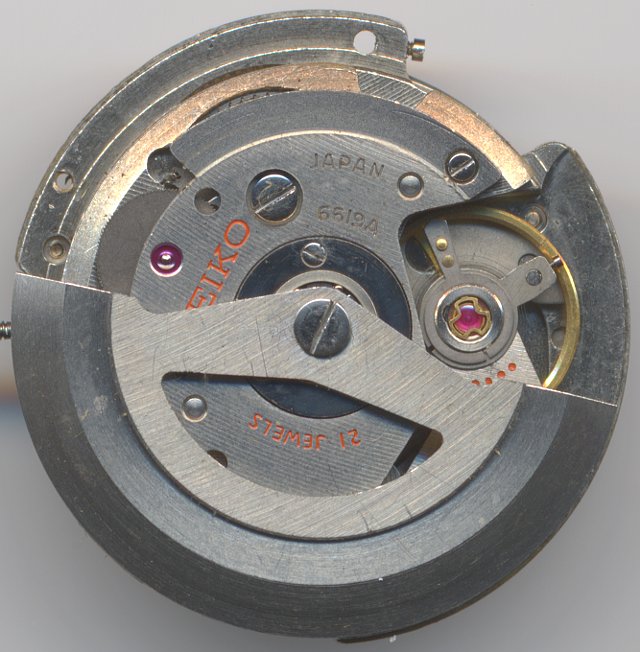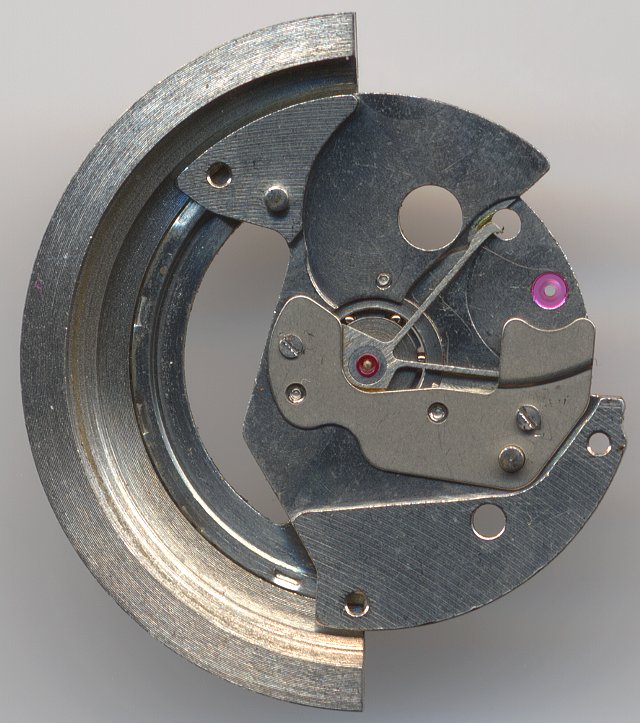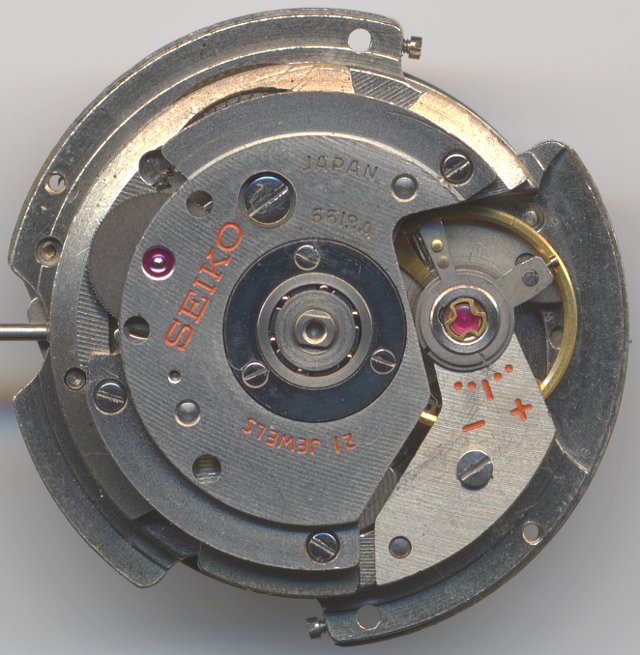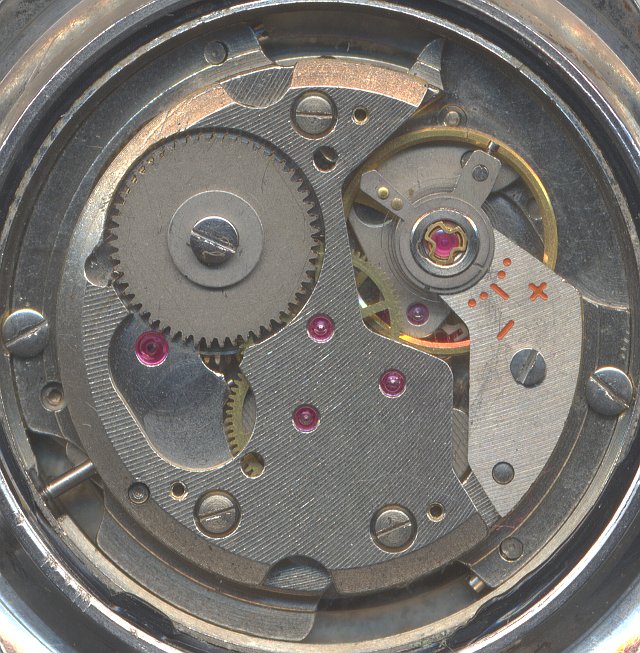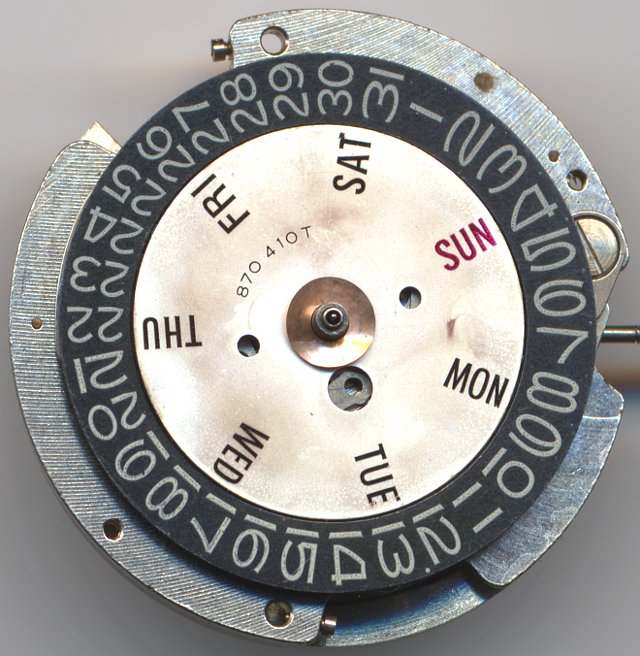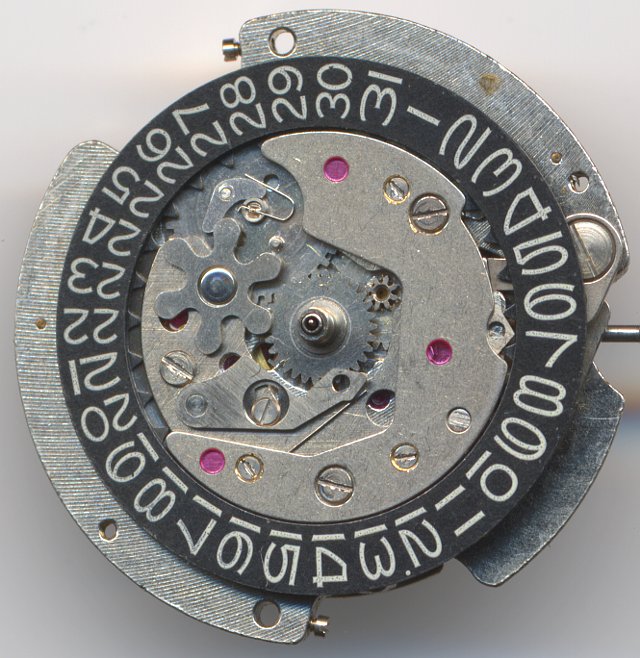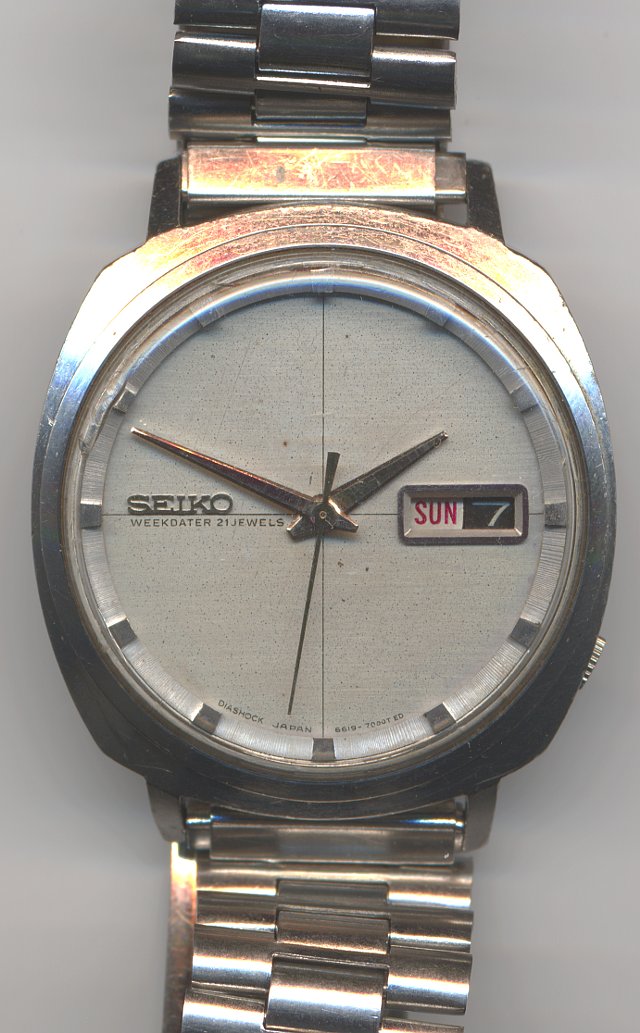Description
The Seiko caliber 6619A presented here, debuted 1964, just in the same years, as the olympic summergames took place in Tokyo, Japan. It is equal to the Caliber 410, which was launched 1963 and used the old numbering scheme.
The selfwinding mechanism is extremely simple, but efficient: The rotor drives with a excenter changer the reduction wheel directly and so works in both direction. The advantage is, that it is a partially hardly idle at all, requires low maintenance and offers great durability - ideal for workhorses, namely for those Seiko watches. So, the term “Magic Lever” for this construction is not used out of the blue…
As you can see here, at position “11:30”, there’s a large open screw. With that screw and a screwdriver, a watchmaker can easily wind the movement. This was neccessiary, since the Caliber 6619A doesn’t offer a handwinding mechanism by the crown.
The balance assembly of this movement consists of a screwless Glucydur balance, which is regulated by a short regulator arm with a simple scale, and a moveable hairspring stud. It is located in two inhouse Diashock bearings. A traditional swiss-type pallet anchor escapement is used; the center second hand is driven directly.
The whole gear assembly is located under the large three-quarter main plate. This construction is cheaper and less prone to manufacturing tolerances, but not very much service-friendly.
The jewels are used the following way:
- Balance: 5
- Escapement: 4
- Anchor wheel: 2
- Fourth wheel: 2
- Third wheel: 2
- Selfwinding reduction gear: 2
- Excenter mechanism: 1
- “blind” jewels on the dial side: 3
That’s 21 jewels altogether.
As denoted before, on the dial side, there’s a speciality, which is pretty unusual for Seiko: Three “blind” jewels without any use at all were inserted below the weekday indicator. Probably this was done due to marketing reasons, which thought, that an “18 jewels” movement wouldn’t be seen as superiour to a conventional “17 jewels” movement and so, at least “21 jewels” should indicate higher quality.
Nevertheless, this movement shows, what kind of perfect constructed, but simple movements, Japan made. These movements, together with stainless steel cases, allowed those workhorse watches to run reliably for decades without any need for a service. And as you can seen on the watch shown below, this was not just theory.
The slowly advancing date could be corrected by pressing the crown.
Technical data
| Manufacturer: | Seiko |
| Caliber: | 6619A |
| Size: | 12 1/2''' |
| A/h: | 18000 |
| Number of jewels: | 21 |
| Escapement: | Pallet lever |
| Balance types: | Glucydur anular balance |
| Shock protection(s): | Diashock (Seiko) |
| Balance bearing / direction hairspring: | Counterclockwise |
| Moveable stud: | yes |
| Adjust mechanism: | Hairspring key |
| Winding mechanism: | yoke winding system |
| Features: |
|
| Production period: | 1964(1963)-19?? |
| References: | Flume: K3 - |
